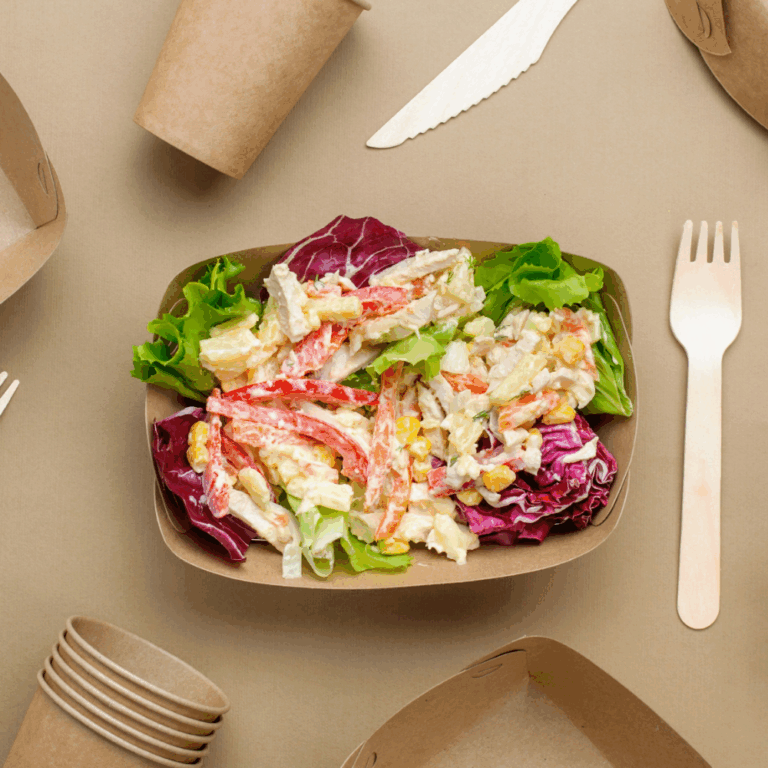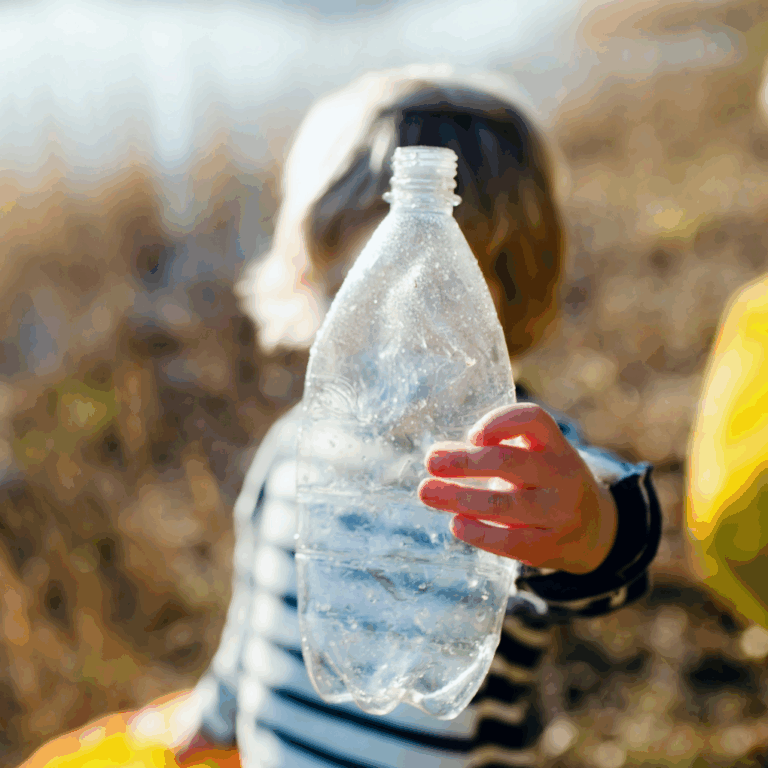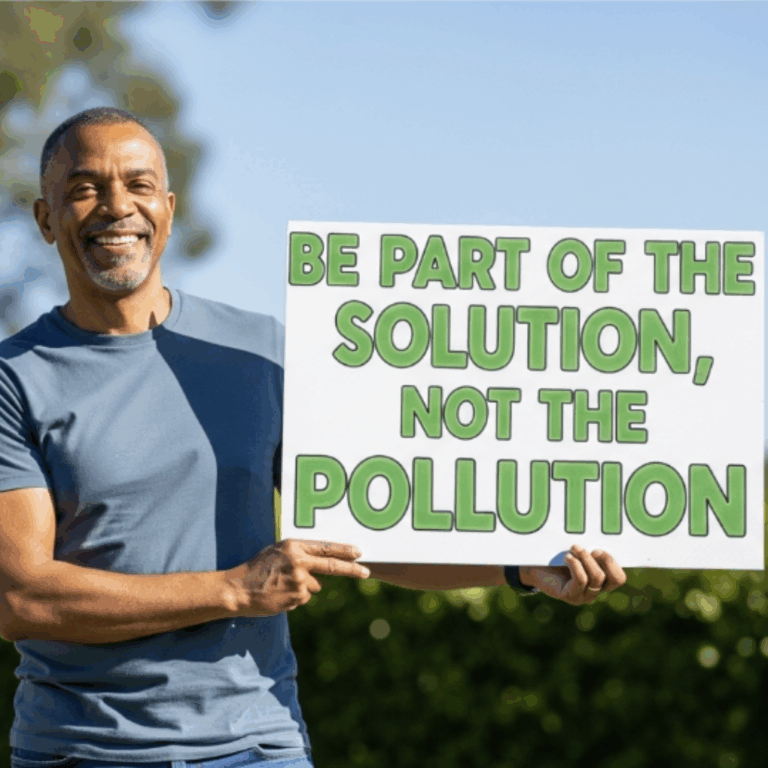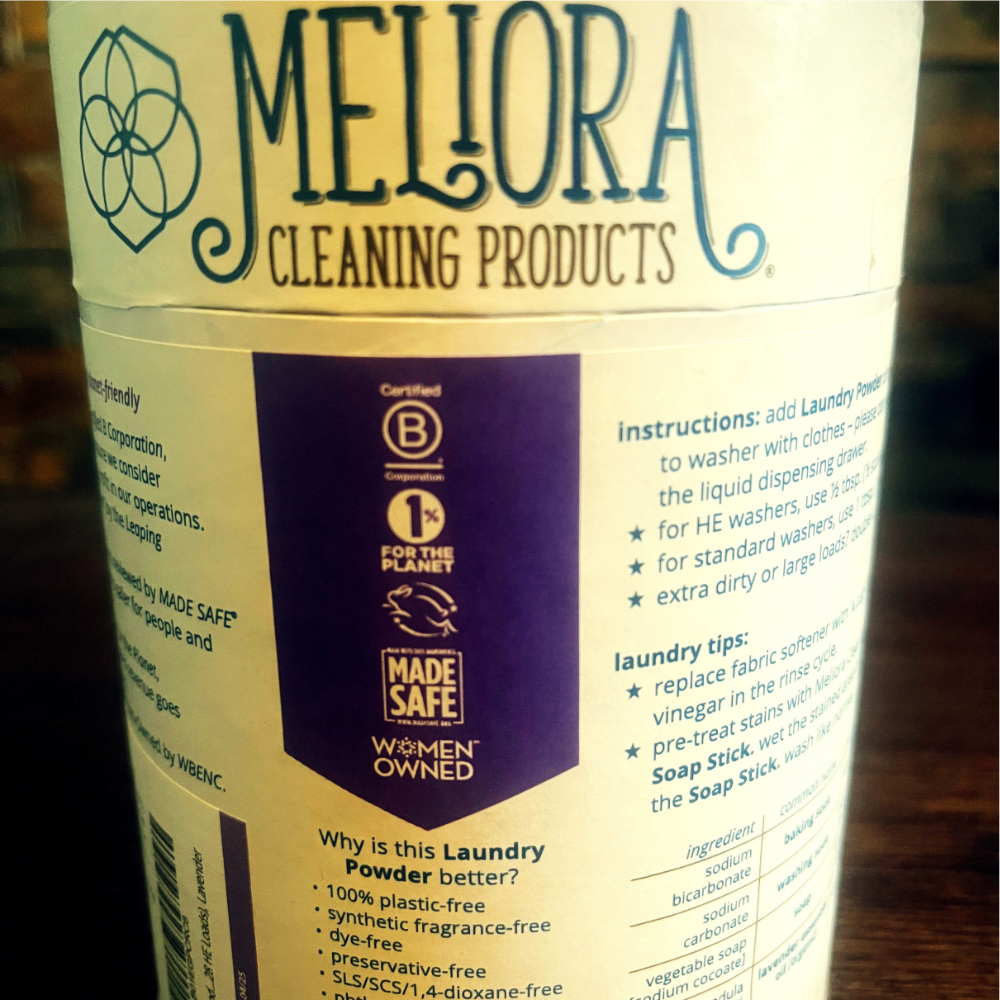
Walk down any aisle, and you’ll see brands plastering “eco-friendly,” “natural,” and “cruelty-free” all over their packaging. But here’s the thing: anyone can slap those words on a label. What separates genuine commitment from clever marketing, aka greenwashing, is third-party certifications.
These aren’t just fancy logos. They prove that an independent organization has audited a brand’s practices, tested its products, and verified its claims. When you see third-party certifications like Leaping Bunny, MADE SAFE, or Zero Plastic Inside, you look at brands that invited scrutiny and passed.
With nearly 9 out of 10 consumers wanting brands to help them live more sustainably, these certifications have become essential navigation tools in a sea of green marketing. They cut through the noise, eliminate the guesswork, and make it possible to shop your values confidently.
From cruelty-free cosmetics to plastic-free packaging, from fair trade sourcing to carbon-neutral operations—this guide breaks down the certifications that matter most and what they guarantee. Because when brands put their reputation on the line with third-party verification, that’s when you know they’re serious about change.
What Do These Third-Party Certifications Mean?
Certifications are designed to simplify shopping decisions by providing clear, verified information about products. Each one focuses on a specific area like ingredient safety, carbon emissions, ethical sourcing, or animal testing practices. While they don’t guarantee perfection, they confirm that a product has met defined standards established by an independent organization.
When you see these logos, the company has to provide documentation and evidence to earn that validation. Rather than just decorative marketing, these seals serve as verification tools that help you understand exactly what commitments the brand has proven to an outside evaluator.
The Reality Behind Certification Standards
Consumers often question whether these certifications truly represent genuine standards or merely marketing tactics. The rigor varies significantly; some require extensive third-party auditing and ongoing monitoring, while others rely more on self-reporting or database checks. Cradle to Cradle and Carbon Trust, for example, typically involve more comprehensive assessment processes than certifications that primarily check against ingredient databases.
Can Products Have Multiple Certifications?
Yes, products can and often do carry multiple certifications. When you see several certification logos on a product label, it typically means the brand addresses different aspects of sustainability rather than just focusing on one area.
For instance, a laundry detergent might display both EWG Verified (for ingredient safety) and Leaping Bunny (for cruelty-free practices) because each certification validates a different consumer concern about the product. One focuses on chemical safety, while the other addresses animal welfare.
This multi-certification approach can signal a genuine commitment to comprehensive sustainability. However, it also represents a significant investment in certification costs, sometimes tens of thousands of dollars across multiple programs. Brands that display their certifications are transparent about exactly which standards they’ve met, helping consumers understand what each symbol means for their specific priorities.
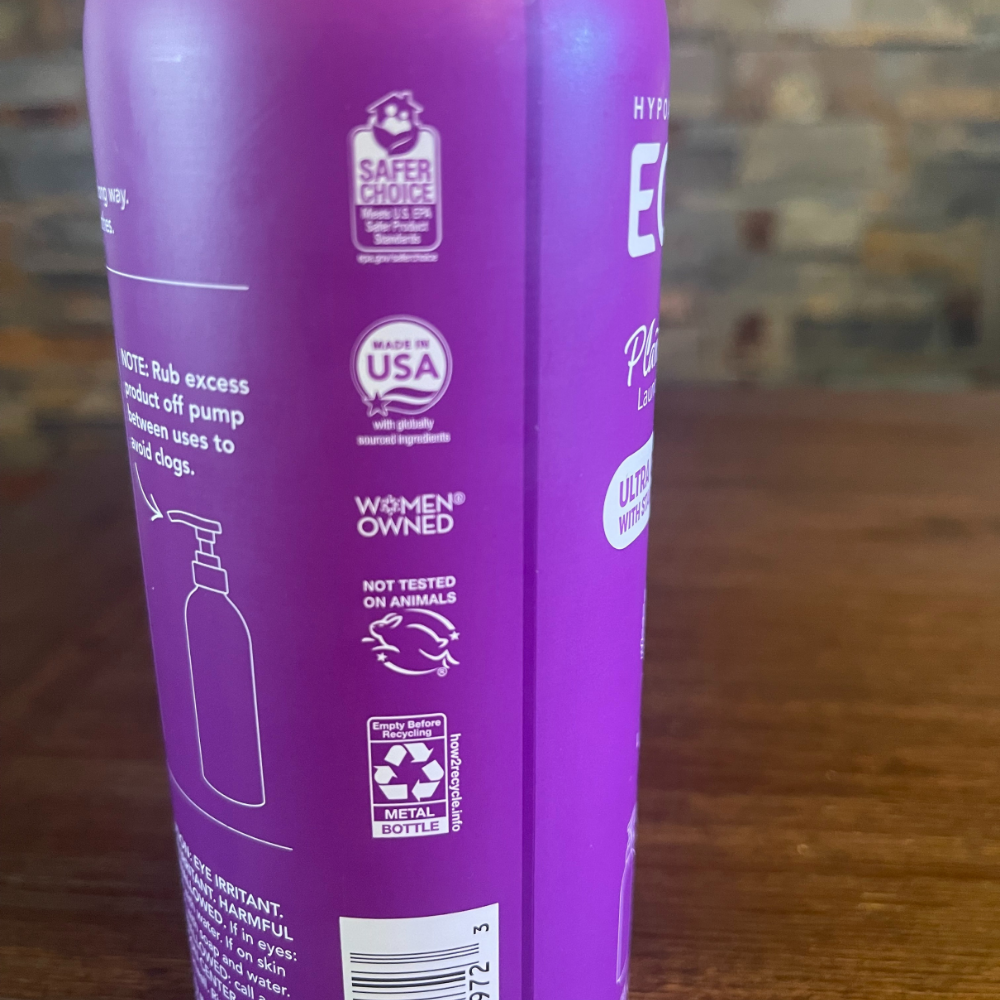
Environmental Sustainability
Walk down any aisle, and you’ll see brands plastering “eco-friendly,” “natural,” and “cruelty-free” all over their packaging. But here’s the thing—anyone can slap those words on a label. What separates genuine commitment from clever marketing? Third-party certifications.
These aren’t just fancy logos. They prove that an independent organization has audited a brand’s practices, tested its products, and verified its claims. When you see certifications like Leaping Bunny, MADE SAFE, or Zero Plastic Inside, you look at brands that invited scrutiny—and passed.
With nearly 9 out of 10 consumers wanting brands to help them live more sustainably, these certifications have become essential navigation tools in a sea of green marketing. They cut through the noise, eliminate the guesswork, and make it possible to shop your values confidently.
From cruelty-free cosmetics to plastic-free packaging, from fair trade sourcing to carbon-neutral operations—this guide breaks down the certifications that matter most and what they guarantee. Because when brands put their reputation on the line with third-party verification, that’s when you know they’re serious about change.
Forest Stewardship Council (FSC)
FSC certification ensures that wood and paper products come from responsibly managed forests, providing environmental, social, and economic benefits. To earn FSC certification, forests must meet 10 principles, including protecting biodiversity, respecting indigenous rights, and maintaining ecological functions.
The certification covers the entire supply chain from forest to final product, with annual audits to ensure compliance. Look for FSC labels on everything from toilet paper to furniture – you guarantee that trees were harvested sustainably and replanted. Learn more: https://fsc.org
Cradle to Cradle Certified™
This certification takes a holistic approach to product design, evaluating products across five critical categories: material health (safe for humans and environment), renewable energy use in manufacturing, water stewardship (clean water protection), social fairness (respect for human rights), and material reutilization (designed for circular economy).
Products are rated from Basic to Platinum levels based on their performance. What makes this certification unique is its focus on positive impact rather than just “less bad” – it pushes companies to design products that benefit people and the Planet. You’ll find it on everything from building materials to clothing to cleaning products. Learn more: https://www.c2ccertified.org
ENERGY STAR
More than just a government sticker, ENERGY STAR certification means products use 10-50% less energy than standard models while maintaining the same performance. To earn the label, products must meet strict energy efficiency guidelines set by the EPA and Department of Energy, with performance verified through independent testing.
The program covers over 75 product categories, from appliances and electronics to commercial buildings and industrial equipment. The impact is impressive: ENERGY STAR-certified products have saved Americans over $450 billion in energy costs since 1992. Look for it when buying anything that plugs in – it’s a simple way to cut your energy bills and carbon footprint. Learn more: https://www.energystar.gov.
Carbon Trust Certification
The Carbon Trust offers certifications that help companies and consumers understand environmental impact. Their Carbon Footprint certification measures and verifies the total greenhouse gas emissions from a product’s lifecycle – from raw materials to disposal. The Carbon Neutral certification goes further, requiring companies to offset all remaining emissions after reducing what they can.
The Carbon Trust Standard certifies organizations that measure their carbon footprint and commit to reducing emissions year over year. Its scientific rigor sets Carbon Trust apart—it uses internationally recognized standards and requires independent verification of all claims. Learn more: https://www.carbontrust.com.
GREENGUARD Certification
GREENGUARD certification addresses indoor air quality by testing products for low chemical emissions. The standard certification limits volatile organic compounds (VOCs) emissions and other chemicals affecting indoor air quality. GREENGUARD Gold takes it further with stricter standards for sensitive environments like schools and healthcare facilities.
Products undergo rigorous testing in specialized chambers that simulate real-world conditions. This certification is crucial because Americans spend about 90% of their time indoors, where air can be 2-5 times more polluted than outdoor air. Look for it on furniture, flooring, paints, adhesives, and building materials. Learn more: https://www.ul.com/resources/greenguard-certification-program
Climate Neutral Certified
Climate Neutral Certified is a rigorous three-step process beyond just carbon offsetting. Companies must measure their carbon footprint across their entire business and supply chain. Then, they must offset 100% of those emissions through verified projects like reforestation or renewable energy. Finally, they commit to reducing their emissions year-over-year with specific, measurable plans.
The certification requires annual verification and public reporting of progress. What makes this different from vague “carbon neutral” claims is accountability – companies must show their work and prove they’re making real reductions, not just buying their way out of responsibility. Learn more: https://www.changeclimate.org.
1% for the Planet
Founded in 2002 by Yvon Chouinard, founder of Patagonia, and Craig Mathews, founder of Blue Ribbon Flies, this certification ensures companies donate at least 1% of their gross annual sales to approved environmental nonprofits. The idea was elegantly simple: since businesses profit from Earth’s resources, they should help protect those resources.
Members don’t just write checks; they must donate to pre-approved organizations that meet strict environmental impact and financial transparency criteria. Since its founding, members have given more than $265 million to environmental causes. The certification demonstrates an ongoing commitment to ecological giving and activism, making it easy for consumers to support companies that put their money where their values are. Learn more: https://www.onepercentfortheplanet.org.
Product Safety & Health
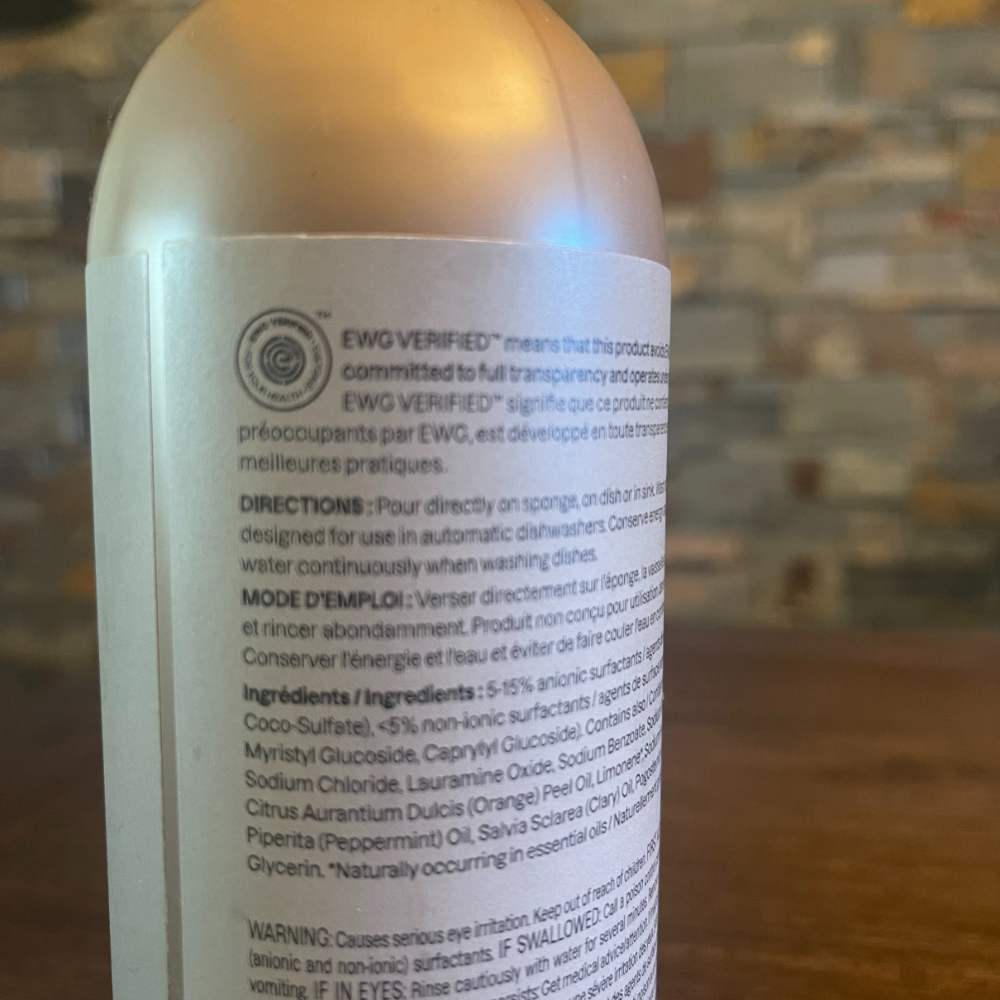
Made Safe
Made Safe is like having a toxicologist review every ingredient in your products. This certification screens for over 6,500 harmful chemicals, including carcinogens, developmental toxins, endocrine disruptors, and environmental pollutants. Products must have safe ingredients that won’t harm human health, animals, aquatic life, or ecosystems.
The rigorous process includes reviewing all ingredients, manufacturing processes, and packaging materials. When you see the Made Safe seal, you know every component has been vetted for safety – no exceptions. Learn more: https://www.madesafe.org.
Environmental Working Group (EWG) Verified™
EWG verified that products met the organization’s strictest standards for health and transparency, and EWG didn’t mess around. Products undergo a rigorous scientific review process that includes screening every ingredient against EWG’s database of health concerns, requiring full ingredient disclosure (including trace contaminants), and prohibiting ingredients of concern like formaldehyde, 1,4-dioxane, and certain preservatives.
The verification also requires adherence to good manufacturing practices and proper product labeling. What makes EWG special is its consumer advocacy focus – they’ve been calling out harmful ingredients in everyday products for over 25 years, so their seal carries serious weight. Learn more: https://www.ewg.org/ewgverified
NSF International
NSF International provides testing, inspection, and certification services that protect public health and safety across multiple industries. Their certifications cover food safety (ensuring products are safe for human consumption), water quality (testing filters and treatment systems), dietary supplements (verifying ingredients and potency), and consumer products (testing for safety and performance).
NSF standards are developed through a rigorous consensus process involving industry experts, regulatory officials, and consumer advocates. What gives NSF credibility is their independence – they’re a nonprofit organization that doesn’t represent any particular industry, plus many of their standards are adopted by regulatory agencies worldwide. Learn more: https://www.nsf.org.
UL (Underwriters Laboratories)
UL has been testing products for safety since 1894, making it one of the most trusted names in certification. Their testing covers electrical safety, fire resistance, chemical exposure, and performance standards across thousands of product categories. UL marks indicate products have been tested to nationally recognized safety standards – think of it as insurance that your products won’t catch fire, electrocute you, or fall apart under regular use.
Many don’t realize that UL also offers sustainability certifications, including recycled content verification, environmental claims validation, and supply chain transparency. When you see a UL mark, you’re looking at products that have undergone some of the most rigorous safety testing in the world. Learn more: https://www.ul.com.
Zero Plastic Inside (Certified Microplastic-Free)
This certification by the Plastic Soup Foundation tackles an invisible problem: microplastics in personal care products. Many beauty products contain tiny plastic particles that wash down drains and end up in our oceans and food chains. To earn this certification, brands must disclose every single ingredient and sign a declaration guaranteeing their products are 100% free of microplastics.
The accreditation covers obvious culprits like microbeads and hidden plastics like specific polymers and synthetic waxes. It’s vital for products that rinse off – shampoos, body washes, toothpaste, and exfoliating scrubs. Learn more: https://www.beatthemicrobead.org.
Animal Welfare & Cruelty-Free
Leaping Bunny
Leaping Bunny is the gold standard for cruelty-free certification and is much more rigorous than you might think. Companies must pledge not to conduct, commission, or pay for animal testing on ingredients or finished products, which also applies to their suppliers. But here’s what makes it special: Leaping Bunny monitors ongoing compliance through independent audits and requires companies to sign legally binding agreements.
They also maintain a positive list of approved suppliers who share their no-testing commitment. Unlike other cruelty-free claims that rely on company self-reporting, Leaping Bunny provides real oversight and accountability. Learn more: https://www.leapingbunny.org.
Certified Humane
Certified Humane ensures farm animals are raised with shelter, resting areas, sufficient space, and the ability to engage in natural behaviors – but the devil is in the details. The standards require specific space allocations (like 1.5 square feet per laying hen), environmental enrichments (perches for chickens, wallowing areas for pigs), and strict animal handling protocols.
Third-party inspectors conduct unannounced annual inspections, and animals must have access to clean water and nutritious feed without antibiotics or growth hormones. What sets Certified Humane apart is its science-based approach – standards developed by veterinarians and animal welfare experts, not marketing teams. Learn more: https://certifiedhumane.org.
Animal Welfare Approved by A Greener World (AWA)
AWA represents farm animals’ highest welfare standard, requiring them to be raised outdoors on pasture or range with continuous and unconfined access to the outdoors throughout their lives. This isn’t just “access to outdoors” – animals must live outside with shelter for weather protection. The standards prohibit routine mutilations (like tail docking), require animals to be able to perform natural behaviors and mandate humane slaughter on-farm or at small abattoirs.
AWA farms are typically smaller, family-owned operations that can provide individual animal care. Third-party auditors conduct annual inspections, but what makes AWA special is their holistic approach – they also require high environmental and sustainability standards from participating farms. Learn more: https://agreenerworld.org.
Organic & Natural Standards
USDA Organic
USDA Organic is the gold standard for organic products in the US, with requirements beyond just avoiding pesticides. Organic farmers must use approved substances only, maintain soil health through crop rotation and composting, provide outdoor access for livestock, and never use antibiotics, hormones, or genetic engineering.
The certification requires a three-year transition period before land can be considered organic, plus annual inspections by USDA-accredited certifiers. Products must contain at least 95% organic ingredients to use the USDA Organic seal. Many don’t realize that organic also means strict record-keeping. Farmers must document everything from seed sources to harvest dates, creating full traceability. Learn more at: https://www.usda.gov/topics/organic.
COSMOS (COSMetic Organic and Natural Standard)
COSMOS is the international standard harmonizing organic and natural cosmetics certification across Europe and beyond. The standard defines strict criteria for organic and natural cosmetics, requiring at least 95% of physically processed agro-ingredients and at least 20% of the total formula to be organic (10% for rinse-off products).
COSMOS also sets standards for environmentally friendly manufacturing processes, biodegradable packaging, and responsible sourcing. What makes COSMOS special is its global reach – it’s recognized by major certification bodies like ECOCERT, BDIH, and Soil Association, making it easier for brands to sell internationally with one certification. Learn more: https://www.cosmos-standard.org.
NATRUE
NATRUE is a nonprofit organization that certifies natural and organic cosmetics, focusing on protecting consumers from greenwashing. Products are classified into three categories: Natural Cosmetics (made with natural substances), Natural Cosmetics with Organic Portion (containing at least 70% organic ingredients), and Organic Cosmetics (containing at least 95% organic ingredients).
NATRUE has a restricted list of allowed processes and ingredients, prohibiting synthetic fragrances, synthetic colors, ethoxylated raw materials, silicones, paraffin, and other petroleum derivatives. What sets NATRUE apart is their strict definition of “natural” – they don’t allow ingredients that have been heavily chemically modified, keeping formulations as close to nature as possible. Learn more: https://www.natrue.org.
Fair Trade & Social Responsibility
Fair Trade Certified™
Fair Trade Certified ensures farmers and workers receive fair wages, work in safe conditions, protect the environment, and receive community development premiums for their products. The certification requires payment of Fair Trade Minimum Prices (when market prices fall below sustainable levels) plus Fair Trade Premiums that communities invest in projects like schools, healthcare, and infrastructure.
Environmental standards prohibit the most harmful chemicals and promote sustainable farming practices. Workers must have the right to organize and are protected by occupational health and safety standards. What makes Fair Trade powerful is the community investment aspect – premiums have funded over 1,400 community projects worldwide, from clean water systems to educational programs. Learn more: https://www.fairtradecertified.org.
Rainforest Alliance Certified
Rainforest Alliance certification works to conserve biodiversity and ensure sustainable livelihoods by transforming land-use practices, business practices, and consumer behavior. Farms must meet comprehensive standards covering forest conservation, wildlife protection, worker rights and welfare, community relations, integrated crop management, and soil and water conservation.
The certification requires maintaining or restoring forest cover, protecting waterways, and providing fair wages and safe working conditions. What’s unique about Rainforest Alliance is their landscape approach – they work with entire communities and regions, not just individual farms, to create sustainable change that benefits people, wildlife, and forests together. Learn more: https://www.rainforest-alliance.org.
B Corporation Certification
B Corp certification goes beyond being a good company – it legally requires companies to balance profit with purpose. Certified B Corporations must meet rigorous social and environmental performance standards, accountability, and transparency across five areas: governance, workers, community, environment, and customers. Companies must score at least 80 out of 200 points on the B Impact Assessment, which evaluates everything from worker benefits and supply chain practices to energy use and charitable giving.
But here’s the key difference: B Corps must legally embed their commitment to stakeholders (not just shareholders) in their corporate structure. This means they’re lawfully accountable to consider the impact of their decisions on all stakeholders, not just investors. Learn more: https://bcorporation.net
SA8000 Social Accountability Standard
SA8000 is an auditable social certification standard that encourages organizations to develop, maintain, and apply socially acceptable practices in the workplace. The standard covers eight key areas: child labor, forced labor, health and safety, freedom of association and collective bargaining, discrimination, disciplinary practices, working hours, and compensation. Companies must not only meet these standards themselves but also monitor their suppliers and subcontractors.
Third-party audits occur every three years with annual surveillance visits. What makes SA8000 significant is its global scope and worker empowerment focus – it requires companies to have worker-management committees and protect workers’ rights to form unions and bargain collectively. Learn more: https://sa-intl.org.
Textile & Fashion
Global Organic Textile Standard (GOTS)
GOTS is the worldwide leading textile processing standard for organic fibers, covering environmental criteria along the entire organic textile supply chain and social criteria, too. To be GOTS certified, textiles must contain at least 70% organic fibers, meet strict environmental standards for dyeing and finishing (including wastewater treatment and chemical restrictions), and comply with social criteria based on International Labour Organization standards.
The certification tracks products from harvesting raw materials to manufacturing, packaging, labeling, and distribution. What makes GOTS special is its comprehensive approach – it’s not just about organic cotton but about ensuring the entire production process is environmentally and socially responsible. Learn more: https://www.global-standard.org.
OEKO-TEX Standards
OEKO-TEX is a family of standards that comprehensively address textile safety and sustainability. Standard 100 tests textiles for over 100 harmful substances, including formaldehyde, heavy metals, and pesticides – if it touches your skin, it’s been tested for safety. Made in Green adds social and environmental criteria, ensuring safe working conditions and eco-friendly production.
STeP (Sustainable Textile Production) certifies manufacturing facilities for chemical management, environmental performance, social workplace standards, and quality management. Eco Passport verifies that textile chemicals and colorants are safe for human use and the environment. Together, these standards create a comprehensive system for secure, sustainable textiles from fiber to finished products. Learn more: https://www.oeko-tex.com
Cradle to Cradle Certified™ for Fashion
Specifically designed for the fashion industry, this certification applies the comprehensive Cradle to Cradle approach to apparel, footwear, and accessories. The accreditation assesses materials and products for human and environmental health safety, renewable energy use in manufacturing, water stewardship practices, social fairness throughout the supply chain, and design for material reutilization (can it be composted or recycled?).
Fashion products are evaluated at every stage, from fiber production through garment manufacturing to end-of-life disposal. What makes this certification revolutionary for fashion is its circular economy focus – it pushes brands to design clothes that become nutrients for new products rather than waste, addressing fashion’s massive environmental footprint. Learn more: https://www.c2ccertified.org.
Why Third-Party Certifications Matter
Third-party certifications provide independent verification beyond a brand’s sustainability claims. When an outside organization audits and confirms a company’s practices, it offers consumers an objective assessment rather than relying solely on marketing statements. This external validation helps distinguish between brands that are genuinely committed to their stated values and those that might be engaging in greenwashing.
These certifications create a ripple effect of positive change. They force transparency throughout supply chains, generate accountability through ongoing monitoring, and often drive companies to exceed minimum standards as they compete for higher certification levels. For consumers, they eliminate guesswork and make it possible to shop your values with confidence.
- Consumer Trust: Independent verification removes bias and gives consumers confidence in brand claims.
- Accountability: Regular audits and monitoring ensure ongoing compliance with standards.
- Market Differentiation: Certifications help brands stand out in crowded markets and justify premium pricing.
- Supply Chain Transparency: Many certifications require traceability throughout the entire supply chain.
- Continuous Improvement: Certification processes often drive companies to adopt better practices and innovate.
When evaluating certifications, consumers should look for those with rigorous standards, independent oversight, regular auditing, and transparency in their processes. Brands investing in relevant certifications demonstrate a comprehensive commitment to responsible business practices.
This Has Been About Third-Party Certifications
Trying to avoid harmful ingredients? Want to support fair working conditions or cut back on plastic? Certifications make it easier to shop in line with your values. They take the guesswork out of choosing what matters and spotlight the brands doing things right—not just saying they do.
Next time you’re deciding between products, check for those trusted seals. Every purchase is a chance to support better business practices and push the industry in the right direction.
